Jorge Iber
Email: Jorge.Iber@ttu.edu
Ph.D., University of Utah
Dr. Iber's training is in Mexican American history however, over the past two decades
his research has focused on issues relating to the participation of Latinos/as (particularly,
Mexican Americans) in U.S. sports history during the 20th century. Professor Iber
received his Ph.D. from the University of Utah in 1997. At TTU, in addition to his
current duties as Vice President for Campus Access and Engagement, he teaches classes
in U.S. Sports History, U.S. Latino History, the second half of the general U.S. History
survey, and Texas History.
Dr. Iber is the author of numerous journal articles, book chapters, and encyclopedia
articles, and over 55 scholarly book reviews, in addition to being author/coauthor/editor/co-editor
of 18 books. Among recent works are the following: Latinos in American Football: Pathbreakers on the Gridiron, 1927 to the Present (co-authored with Mario Longoria) for McFarland & Company, 2020; Latinos and Latinas in American Sport: Stories Beyond Peloteros, Texas Tech University Press, 2020; Senor Sack: The Life of Gabe Rivera, Texas Tech University Press, 2021; Tony Romo: A Texas Sports Hero (co-authored with my wife, Raquel Iber) for Texas Tech University Press, 2022; Beisbol on the Air: Essays on Major League Spanish Language Broadcasters (co-edited with Anthony Salazar) for McFarland & Company, 2023; and The Sanchez Family: Mexican American High School and Collegiate Wrestlers from Cheyenne,
Wyoming, University of Wyoming Press, 2025. In addition, he is on the Editorial Board of Oxford Bibliographies for Latino Studies and is a contributor to the "Sports in American History" blog; having submitted numerous essays and book reviews.
Among his most recent journal and anthology articles are the following: 1) A 12,000
word essay on Latinos and sport for The Oxford Handbook of Latino Studies entitled “Latinos and Sports: Where We Are and Where We Need to Go.” This work appeared
in October of 2018; 2) A 4,000 word essay on Latinos and sport for the edited collection
entitled Teaching U.S. History Through Sports edited by Pamela Grundy for the University of Wisconsin Press (2019); 3) An article
entitled “Beisbol as Part of “Una Vida en Comun en la Frontera”: The Career and Significance of Eduardo Ortega, the Voz of the San Diego Padres,” appeared in the journal NINE: A Journal of Baseball History and Culture in the Fall-Spring 2017-2018 issue (Volume 26, Numbers 1-2) and 4)An article entitled
“The Sanchezes of Cheyenne, Wyoming: The First Generation of a Family of Wrestlers
on the Local, State, and National Stage,: in the Autumn 2020-Winter 2021 issue (Volume
92, Number 4) of The Annals of Wyoming. Dr. Iber is about to publish two more articles. The first one is for the Journal of the West and entitled " The Roma Tradition is Chuy Guerra:” The Role of Basketball in the Life of a Mexican
American Athlete and His Community," which should appear before the end of 2025. The second one is entitled (co-authored
with Guillermo Ortega of the School of Education here at TTU), "The Greater El Paso Showcase: Latinx High School-to-College Sports Pathways" for the High School Journal. The paper has been accepted, but as of 10/2025 we still do not have a publication
date.
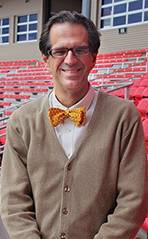
Select Publications
The Sanchez Family: Mexican American High School and Collegiate Wrestlers from Cheyenne,
Wyoming
The Sanchez Family is a family history detailing the Sanchez
family’s experiences as immigrants to Wyoming and the ways that their US-born children’s interest in wrestling had cascading impacts
across generations. By focusing on a sport and a state that have not received much
attention, Jorge Iber conveys the importance of athletics as a part of the educational
experience of the Latino community.
and the ways that their US-born children’s interest in wrestling had cascading impacts
across generations. By focusing on a sport and a state that have not received much
attention, Jorge Iber conveys the importance of athletics as a part of the educational
experience of the Latino community.
The first members of this particular Sanchez clan arrived in Wyoming during the early
decades of the twentieth century. The first-generation American grandchildren of these
families—Gilbert, David, Arthur, and Ray—used wrestling to radically alter their social
and economic status by attending college with athletic scholarships, graduating, and
moving on to professional, middle-class careers. Subsequent generations of the family
followed their fathers and uncles to the mats at various institutions, also going
on to earn degrees and enter professional occupations. Indeed, Iber contends that
wrestling became the family’s “business,” the mechanism by which the Sanchezes extricated
themselves from Cheyenne’s working class.
Learn more at Amazon.com
Señor Sack: The Life of Gabe Rivera (Texas Sport Heroes)
Gabriel “Gabe” Rivera was one of the greatest players in the history of Texas Tech
football. He earned All American status, was enshrined into the College Football Hall
of Fame, and saw his name elevated to the Texas Tech Ring of Honor. After his college
career, Rivera became a first-round selection of the Pittsburgh Steelers in 1983,
but his career would be tragically cut short by an accident during his rookie year
that left him paralyzed from the waist down.
Sports historian Jorge Iber’s newest book chronicles this Mexican American athlete’s rise to prominence and later life. Beginning with the Rivera family in Crystal City, Texas, a hotbed of Chicano activism in the late 1960s, Señor Sack seeks to understand how athletic success impacted the Rivera family’s most famous son on his route to stardom. Football provided this family with opportunities that were not often available to other Mexican Americans during the 1940s and 1950s.
While Rivera’s injury seriously derailed his life, Señor Sack also chronicles his struggle to regain a sense of purpose. With great effort and despite adversity, over the final two decades of his life, Rivera found meaning in helping minority youths in his community of San Antonio, serving as an example of what can be accomplished even under incredibly trying circumstances. Ultimately, the true legacy of Gabe Rivera is not just on the football field, but also in the lives he touched with his volunteer work. One of the most storied Red Raiders and a legend of Texas football, Gabe Rivera powered through many obstacles to make way for future generations of Latinos in American sports.
Learn more on Amazon.com
Béisbol on the AIR: Essays on Major League Spanish-Language
Both the U.S. population and Major League Baseball rosters have seen dramatic demographic changes over the past 50 years. The nation and the sport are becoming multilingual, with Spanish the unofficial second language. Today, 21 of 30 MLB teams broadcast at least some games in Spanish.
Filling a gap in the literature of baseball, this collection of new essays examines the history of the game in Spanish, from the earliest locutores who called the plays for Latin American audiences to the League's expansion into cities with large Latino populations--Los Angeles, Houston and Miami to name a few--that made talented sportscasters for the fanaticos a business necessity.
Learn more on Amazon.com
Tony Romo: A Texas Sports Hero (Texas Sports Heroes)
Tony Romo’s place in NFL history is a surprising story, one that Jorge and Raquel
Iber tell from its unlikely origins to its happy present in clear language for middle
readers.
Tony’s grandfather was a migrant worker who emigrated from Mexico to Wisconsin, where he and his Texas-born Mexican American spouse fought hardscrabble for a middle-class life. Readers will learn about a Latino/a community’s struggles and triumphs in this unlikely midwestern enclave.
Unlike other future superstar quarterbacks, Tony didn’t get to play for a large city high school team. He was barely noticed by college recruiters, and his only real path to the next level came at a small school, Eastern Illinois University.
At EIU, Tony fought his way to become the starting quarterback. The story repeated itself in the NFL, when Tony battled his way from undrafted prospect all the way to All-Pro starting quarterback for the most famous NFL franchise in the world, the Dallas Cowboys.
A must-read for young Cowboy fans and their parents, Jorge and Raquel’s book places Tony’s life story among other famous figures in contemporary American sports. Relive Tony’s career, his difficulties and successes. Tony is the quintessential Texas Sport Hero.
Learn more on Amazon.com
Latinos in American Football: Pathbreakers on the Gridiron, 1927 to the Present
In 1927 Cuban national Ignacio S. Molinet was recruited to play with the Frankford Yellow Jackets of the old NFL for a single season. Mexican national Jose Martinez-Zorrilla achieved 1932 All-American honors. These are the beginnings of the Latino experience in American Football, which continues amidst a remarkable and diversified setting of Hispanic nationalities and ethnic groups. This history of Latinos in American Football dispels the myths that baseball, boxing, and soccer are the chosen and competent sports for Spanish-surname athletes. The book documents their fascination for the sport that initially denied their participation but that could not discourage their determination to master the game.
Learn more at Amazon.com
Latinos and Latinas in American Sport: Stories Beyond Peloteros (Sport in the American
West)
This anthology expands upon the significance of sport in U.S. Latino communities by looking at sports as diverse as drag racing and community softball, the rise of Latinas in high school.
Learn more at Amazon.com
Moments of Joy and Heartbreak: 66 Significant Episodes in the History of the Pittsburgh
Pirates
The Pittsburgh Pirates have a long history, peppered with moments significant both to Pirates fans and Major League Baseball. While the Pirates are recognized as fielding the first all-black lineup in 1971, the 66 games in this book include one of the first matchups in the majors to involve two non-white opening hurlers (Native American and Cuban) in June 1921. We relive no-hitters, World Series-winning homers, and encounter the story of the last tripleheader ever played in major-league baseball. Some of the games are wins; some are losses. All of these essays provide readers with a sense of the totality of the Pirates’ experiences: the joy, the heartbreak, and other aspects of baseball (and life) in between.
Learn more at Amazon.com
All About Mariano Rivera
Born in a poor Panamanian fishing village, Mariano River Jr. did not think he would grow up to be a famous New York Yankees pitcher. In fact, he thought that he would follow his father into the fishing industry. After he replaced a poorly-performing pitcher during an amateur baseball game, the Yankees scout saw his talent.
Mariano Rivera would go on to become a thirteen-time All-Star and five-time World Series champion. He holds two MLB records and has won many other awards. He is a favorite for induction into the Hall of Fame.
Learn more at Amazon.com
Mike Torrez: A Baseball Biography
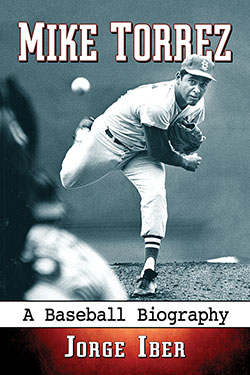 The history of baseball is filled with players whose careers were defined by one bad
play. Mike Torrez is remembered as the pitcher who gave up the infamous three-run
homer to Bucky “Bleeping” Dent in the 1978 playoffs tie-breaker between the Red Sox
and Yankees. Yet Torrez’s life added up to much more than his worst moment on the
mound. Coming from a vibrant Mexican American community that settled in Topeka, Kansas,
in the early 1900s, he made it to the Majors by his own talent and efforts, with the
help of an athletic program for Mexican youth that spread through the Midwest, Texas
and Mexico during the 20th century. He was in the middle of many transformative events
of the 1970s—such as the rise of free agency—and was an ethnic role model in the years
before the “Fernandomania” of 1981. This book covers Torrez’s life and career as the
winningest Mexican American pitcher in Major League history.
The history of baseball is filled with players whose careers were defined by one bad
play. Mike Torrez is remembered as the pitcher who gave up the infamous three-run
homer to Bucky “Bleeping” Dent in the 1978 playoffs tie-breaker between the Red Sox
and Yankees. Yet Torrez’s life added up to much more than his worst moment on the
mound. Coming from a vibrant Mexican American community that settled in Topeka, Kansas,
in the early 1900s, he made it to the Majors by his own talent and efforts, with the
help of an athletic program for Mexican youth that spread through the Midwest, Texas
and Mexico during the 20th century. He was in the middle of many transformative events
of the 1970s—such as the rise of free agency—and was an ethnic role model in the years
before the “Fernandomania” of 1981. This book covers Torrez’s life and career as the
winningest Mexican American pitcher in Major League history.
Learn more at Amazon.com.
More Than Just Peloteros: Sports and U.S. Latino Communities
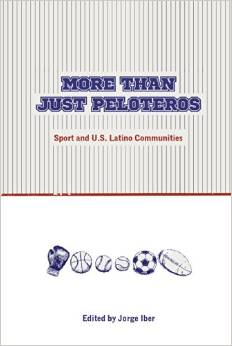 Although the Latino/a population of the United States has exploded since the 1960s,
an analysis of its place in the history of American sport has, until recently, been
sorely underrepresented. The thoughtful and coherent essays in More Than Just Peloteros demonstrate that participation in sport and recreation develops identity and involvement
in the lives of Spanish-speaking people throughout what is now the United States.
The articles feature accounts of eras and events as varied as the Latino experience
itself, including horse racing in colonial San Antonio, boxing in New York City, baseball
in the barrios of 1930s Chicago, basketball in a 1950s Arizona mining town, and, of
course, high school football in South Texas.
Although the Latino/a population of the United States has exploded since the 1960s,
an analysis of its place in the history of American sport has, until recently, been
sorely underrepresented. The thoughtful and coherent essays in More Than Just Peloteros demonstrate that participation in sport and recreation develops identity and involvement
in the lives of Spanish-speaking people throughout what is now the United States.
The articles feature accounts of eras and events as varied as the Latino experience
itself, including horse racing in colonial San Antonio, boxing in New York City, baseball
in the barrios of 1930s Chicago, basketball in a 1950s Arizona mining town, and, of
course, high school football in South Texas.
As the nation’s demographics continue to change, more and more Latinos/as will, undoubtedly,
leave their marks on the fields of athletic competition at levels ranging from the
local to the professional, the business offices of franchises and colleges, and as
general consumers of American sporting events and goods. This volume recognizes and
encourages the role that sport and recreation play in the day-to-day existence of
Spanish speakers in the United States
Learn more at Amazon.com.
Latino American Wrestling Experience: Over 100 Years of Wrestling Heritage in the United States (e-book with Lee Maril, for the National Wrestling Hall of Fame)
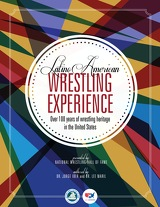
Learn more at NWHOF.org.
Latinos in U.S. Sport: A History of Isolation, Cultural Identity, and Acceptance
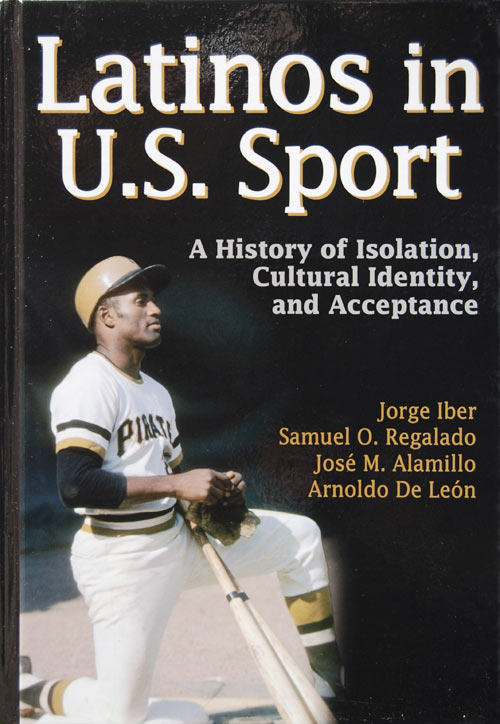 Latinos in U.S. Sport: A History of Isolation, Cultural Identity, and Acceptance is
the first comprehensive exploration of Latino culture and its relationship to sport
in what is now the United States. Spanning a period of 500 years from the 16th century
to the present and discussing a wide range of Latino communities, regions, and sports,
Latinos in U.S. Sport offers an accessible examination of the Latino sporting experience
in the United States by covering topics ranging from cultural issues to economics.
Latinos in U.S. Sport: A History of Isolation, Cultural Identity, and Acceptance is
the first comprehensive exploration of Latino culture and its relationship to sport
in what is now the United States. Spanning a period of 500 years from the 16th century
to the present and discussing a wide range of Latino communities, regions, and sports,
Latinos in U.S. Sport offers an accessible examination of the Latino sporting experience
in the United States by covering topics ranging from cultural issues to economics.
Using newspaper accounts and primary sources as well as dissertations and scholarly articles from history, education, sport business, and other disciplines, the authors provide a thorough and enlightening account of this population’s role in U.S. sport history. The text details the experiences of Mexican Americans, Puerto Ricans, Cubans, Dominicans, and others as it chronicles the community, school-based, and professional influences of Latinos within a variety of sports and sport contexts. The authors discuss the evolution of sport, games, and physical activity. They also examine the shifting perceptions both within and outside of the Latino community and the outcomes of these changes.
The timeline within the text gives readers a visual presentation of the key events and figures in this culture’s history. The book highlights Latino athletes and teams who overcame great odds to succeed at the local, high school, collegiate, and professional levels and details the early participation of such individuals in international athletic competitions, such as the Olympics and Pan-American Games. In addition to examining well-known figures such as Nancy López, Chi Chi Rodríguez, Pancho González, and Roberto Clemente, special Unknown Heroes sidebars introduce readers to many lesser-known but influential athletes and coaches.
Latinos in U.S. Sport begins by detailing the games and diversions particular to the Spanish conquistadors, various Native American groups, and the integrated culture of the mestizo, and it traces the ways in which American influence moved into these regions. Moving ahead to the late 19th and early 20th centuries, the text describes how European Americans used baseball as part of their attempt to bring “civilization” to the areas of the Caribbean and the Southwest. The text also discusses how the success of Cubans and other Latin Americans within Major League and Negro League Baseball helped to challenge the perception of Spanish speakers among the broader U.S. population. The final section of the book discusses the increasing presence of Latinos in all fields of sport competition, their growing presence in management and ownership of sport franchises, and their increasing economic power as consumers of athletic events.Latinos in U.S. Sport presents a long-overdue look at the history of Latino participation in multiple facets of American sport and provides a balanced and more complete history of the contribution of Spanish-speaking people to the history of U.S. sport. The text aims to generate discussion and inspire further recognition of the influence of Latinos in the U.S. sport world.
Learn more at Amazon.com.
Mexican Americans and Sports: A Reader on Athletics and Barrio Life
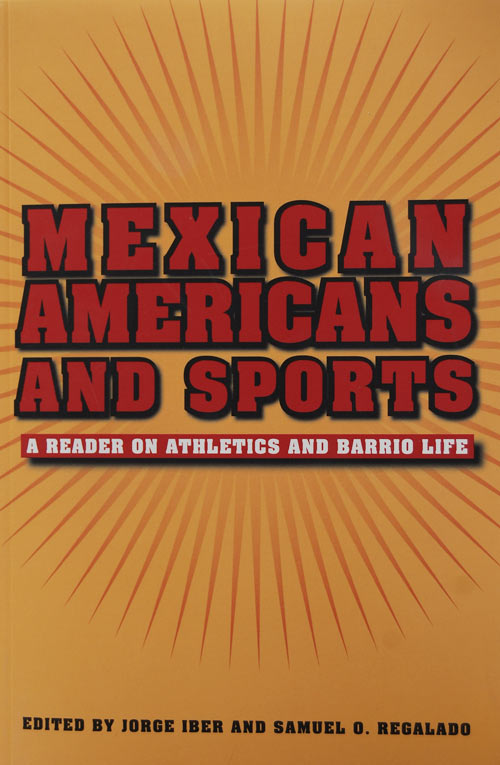 For at least a century, across the United States, Mexican American athletes have actively
participated in community-based, interscholastic, and professional sports. The people
of the ranchos and the barrios have used sport for recreation, leisure, and community
bonding.
For at least a century, across the United States, Mexican American athletes have actively
participated in community-based, interscholastic, and professional sports. The people
of the ranchos and the barrios have used sport for recreation, leisure, and community
bonding.
Until now, though, relatively few historians have focused on the sports participation of Latinos, including the numerically preponderant Mexican Americans. This volume gathers an important collection of such studies, arranged in rough chronological order, spanning the period from the late 1920s to the present.
They survey and analyze sporting experiences and organizations, as well as their impact on communal and individual lives. Contributions spotlight diverse fields of athletic endeavor: baseball, football, soccer, boxing, track, and softball. Mexican Americans and Sports contributes to the emerging understanding of the value of sport to minority populations in communities throughout the United States. Those interested in sports history will benefit from the book’s focus on under-studied Mexican American participation, and those interested in Mexican American history will welcome the insight into this aspect of the group’s social history.
Learn more at Amazon.com.
Hispanics in the American West
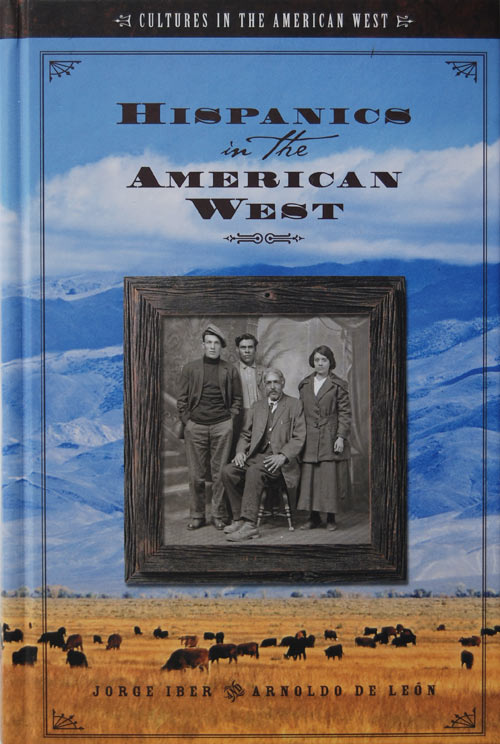 Hispanics have been in America longer than any other non-Native American ethnic group,
and, like the latter, they were targeted for conquest during the initial settling
of the West. Through the centuries, however, Hispanic American culture has endured
and thrived, fueled by continual immigration, a powerful political and economic momentum,
and a presence that is rapidly expanding beyond traditional Hispanic strongholds.
Hispanics have been in America longer than any other non-Native American ethnic group,
and, like the latter, they were targeted for conquest during the initial settling
of the West. Through the centuries, however, Hispanic American culture has endured
and thrived, fueled by continual immigration, a powerful political and economic momentum,
and a presence that is rapidly expanding beyond traditional Hispanic strongholds.
Hispanics in the American West portrays the daily lives, struggles, and triumphs of Spanish-speaking peoples from the arrival of Spanish conquistadors to the present, highlighting such defining moments as the years of Mexican sovereignty, the Mexican-American War, the coming of the railroad, the great Mexican migration in the early 20th century, the Great Depression, World War II, the Chicano Movement that arose in the mid-1960s, and more.
Coverage includes Hispanics of all nationalities (not just Mexican, but Cuban, Puerto Rican, Salvadoran, and Guatemalan, among others) and ranges beyond the "traditional" Hispanic states (Texas, California, Arizona, New Mexico, and Colorado) to look at newer communities of Spanish-speaking peoples in Oregon, Hawaii, and Utah. The result is a portrait of Hispanic American life in the West that is uniquely inclusive, insightful, and surprising.
Learn more at Amazon.com.
Hispanics in Mormon Zion, 1912-1999
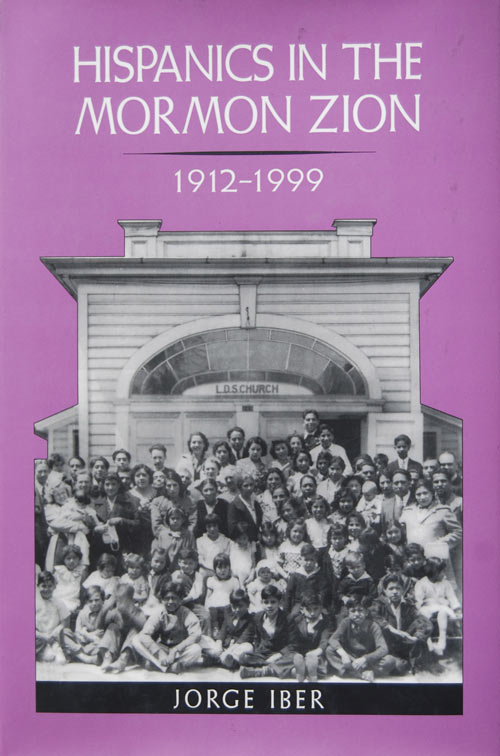 As immigrants came to the United States from Mexico, the term "Greater Mexico" was
coined to specify the area of their greatest concentration. America's southwest border
was soon heavily populated with Mexico's people, culture, and language. In Hispanics in the Mormon Zion, 1912–1999, however, Jorge Iber shows this Greater Mexico was even greater than presumed as he
explores the Hispanic population in one of the "whitest" states in the Union—Utah.
As immigrants came to the United States from Mexico, the term "Greater Mexico" was
coined to specify the area of their greatest concentration. America's southwest border
was soon heavily populated with Mexico's people, culture, and language. In Hispanics in the Mormon Zion, 1912–1999, however, Jorge Iber shows this Greater Mexico was even greater than presumed as he
explores the Hispanic population in one of the "whitest" states in the Union—Utah.
By 1997, Hispanics were a notable part of Utah's population as they could be found
in all of the state's major cities working in tourist, industrial, and service occupations.
Although these characteristics reflect the population trends in other states, Iber
centers on those aspects that set Utah's Hispanic comunidad apart from the rest.
Iber focuses on the significance of why many in the Utah Hispanic comunidad are leaving
Catholicism for the Church of Jesus Christ of Latter-day Saints (LDS). He examines
how conversion affects the Spanish-speaking population and how these Hispanic believers
are affecting the Mormon Church. Iber also concentrates on the geographic separation
of Hispanics in Utah from their Mexican, Latin American, New Mexican, and Coloradoan
roots. He examines patterns of Hispanic assimilation and acculturation in a setting
which is vastly different from other Western and Southwestern states.
Learn more at Amazon.com.
Department of History
-
Address
Texas Tech University, Box 41013, 3001 15th Street, Humanities (formerly English/Philosophy) 165, Lubbock, TX 79409 -
Phone
806.742.3744 | Fax: 806.742.1060 -
Email
info.history@ttu.edu
